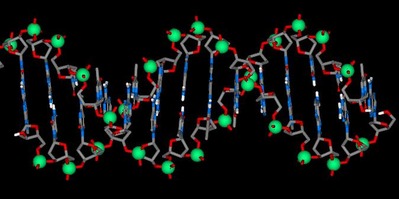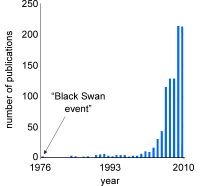For a moment, the world was astonished.
But looking beyond the surface, it was something that was not clear.
The STAP Cell fever[1] is an issue that has cast the spotlight on the problems that science and society face. The development of this issue is something from which I cannot take my eyes off. Many other sites have commented on this issue so I shall refrain from doing so here. Instead, I wish to talk about science that is misunderstood, what being scientific means, and what etiquette exists behind science.
Based on that, I would like you to rethink about where the problem lies within the STAP Cell paper.
I would first like to clarify that I am a scientist myself.
Scientists are a breed of people who are actively seeking to understand Nature’s workings, something which is yet to be clarified. Therefore, be it trying to answer whether UFOs exist, or something however out of this world, all of it may be considered science as long as there is an attempt in understanding Nature. Of course, in order to prove the existence or inexistence of UFOs scientifically, certain scientific procedures/formalities are required. If one is not careful here and is careless or makes an intentional mistake, then we would see things like “Water can understand what we say” or “Lithium is converted to hydrogen gas”.
What exactly are scientific procedures/formalities?
First and foremost, the underlying premise of science is that we cannot prove that something “does not exist” or that something is “impossible”. This is because once contrary evidence is found (that something exists), the entire theory is dimissed. The only scientific thing that we can say is “~ does not exist or is impossible based on current evidence”. We can say that we have not found a white crow so far but the monent one white crow is found, it becomes a scientific fact that white crows do exist. In English, there is a term used to describe discoveries that result in dramatic changes in science: a black swan event.[2]
Thus, we need to be careful with the fact that science is fluid and changing, and that there is nothing that is 100% for sure. In other words, it is dangerous to put blind faith in science. Science has made rapid advancements through the occasional discovery that went against all common sense.
However, it is not scientific to assert that “because we cannot deny the existence of white crows, it is wrong to say that all crows are black.” Of course, there is nothing wrong in forming such a hypothesis but the researcher who is advancing such a theory needs to come up with some scienfitic proof. This is the part of science that is often misunderstood. STAP cells may exist but if you claim that they do exist, then you need to prove it scientifically.
Well then, what do I mean by “scientific”? It is possible, in fact, to draw the line clearly between “scientific” and “non-scientific”. In science, we:
1. Form a hypothesis; 2. Start collecting evidence to support the hypothesis (theories and experimental results); 3. Carefully examine the evidence that supports the theory; 4. Publish a paper if our hypothesis is correct; 5. Defend our theory by collecting more evidence or revise our theory after scrutiny from the scientific community; 6. Confirm the theory by getting a third party to reproduce our results experimentally, or by comparing with other theories out there; 7. and once it is no longer possible to refute the theory scientifically, the theory, for the first time, becomes shared knowledge among humans.
This is an extremely long and arduous process that needs to be followed through. In recent years, there have been many scientific discoveries, big and small, such that very few research go beyond step 4. Once the paper is published, that’s it. Only research that has a great impact on the scientific community will garner the attention of many researchers, resulting in more counterarguments being put forth.
Pseudo-science: Something that is falsely similar to science
In pseudo-science, which cannot be considered as science, steps 2 and beyond are usually ignored completely. Only data that supports the hypothesis is presented.
Let us assume that we have obtained the following experimental data: “Nice crystals were formed when ‘thank you’ was written on a piece of paper and shown to the solution, while terrible crystals were formed when ‘idiot’ was written and shown to the solution. So the hypothesis that the solution recognises words can be formed. However, to make the experimental data obtained more valid scientifically, at the very least the following control experiments have to be carried out:
1. Repeat experiments many times and confirm that the same results can be obtained each time, or at the very least, obtained sufficient times when the error is taken into consideration; 2. Observe what happens when nothing is shown to the solution; 3. Change the place where or the time when the experiment was carried out and confirm reproducibility; 4. and if a third-party can reproduce the results by following the exact procedure, then all is well.
It is important to consider all other hypotheses or theories in order to prove the validity of your own theory, and then come up with an experimental plan after excluding those experiments that need not be done because of various reasons. After which, it is important to check the reproducibility of results and also that the results do not contradict each other. Therefore, even if the STAP cell was, by chance, made once, it will not be recognised as science unless the results can be reproduced.
Patents are frequently used in pseudo-science. When somebody says that they have obtained a patent, it may sound more impressive than publishing a paper but in reality, the reviewers of patents do not look so much into the science of a patent but more so into how novel the idea or soon-to-be patent is. Thus, there are many patents that are scientifically incorrect. It seems that things like the “perpetual motion machine of the first kind” or “cold fusion” will not be accepted but it is a fact that no scientist or researcher would form a counterargument against patents of any kind. Therefore, even if a patent describing a perfume that attracts members of the opposite sex were to exist, it does not imply that pheromones are at work.
Experimental results that are completely irrelevant or those that are meaningless will not be accepted in science
For the proof of the argument “microbes living in lakes with high amounts of arsenic use arsenic in place of phosphorus in their DNA“,[3] it is insufficient to just look at the amount of arsenic in the DNA extracted from these microbes. It must be demonstrated through experiments that arsenic is covalently bonded within the DNA. At this point, if the defending counterargument is that it is impossible to extract and isolate the DNA for experiments because it is too unstable, then the science stops there. Things that cannot be validated are not science and the onus is on the person who suggested the theory in the first place to develop new methods to prove his theory.
It appears that “science” that involves biology or living things have a higher incidence rate of inappropriate papers involving plagiarism etc, as with the STAP cell incident this time. In Chemistry, we have not seen or heard such a big scandal because it is relatively easier for a third-party to verify results through experiments, and also because it is probably more difficult to fabricate evidence that is required for the submission of papers to Chemistry journals.
Will the Internet result in a paradigm shift for science?
The Journal of the American Chemical Society, an extremely well-respected journal, published a too-good-to-be-true paper on the oxidation of benzyl alcohol with sodium hydride. This caused a great sensation all over the world (maybe?), and this site tried to demonstrate the reproducibility of the results by conducting the experiments. Ultimately, the original paper was retracted but it is still unknown where the problem was. (It is said that the same authors have submitted a similar paper[4] to Tetrahedron and clarified that it is aerobic oxidation of benzyl alcohol. Furthermore, some other authors have published something similar in Tetrahedron Letters.)
The Internet played a huge role in facilitating the discussion regarding the STAP cell problem and the paper published. More and more problems with regard to the paper were discovered and revealed and many claimed that they failed in reproducing the results reported in the paper. I think this indicates that we are now at a stage where the traditional way of science is undergoing a revolution of change.
Well then, what will become of the published paper that is regarded as most important by many? I think many non-scientists have completely no idea and there are many issues that are misunderstood by many. Since this blog post has gotten so long, I shall introduce the etiquette relating to scientific papers next time.
This post is an English translation of the original blog post written in Japanese. The original post can be found here.
-
References
[1] (a)”Stimulus-triggered fate conversion of somatic cells into pluripotency”
Obokata, H.; Wakayama, T.; Sasai, Y.; Kojima, K.; Vacanti, M. P.; Niwa, H.; Yamato, M.; Vacanti, C. A. Nature 2014, 505, 641. DOI: 10.1038/nature12968
(b) “Bidirectional developmental potential in reprogrammed cells with acquired pluripotency”
Obokata, H.; Sasai, Y.; Niwa, H.; Kadota, M.; Andrabi, M.; Takata, N.; Tokoro, M.; Terashita, Y.; Yonemura, S.; Vacanti, C. A.; Wakayama, T. Nature 2014, 505, 676. DOI: 10.1038/nature12969
[2] “Black Swan Events” in Organic Synthesis”
Nugent, W.A. Angew. Chem. Int. Ed. 2012, 51, 8936. DOI: 10.1002/anie.201202348
When a research area “goes viral”, the event typically occurs in conjunction with a major change in “conventional wisdom”. In retrospect, the literature often contains earlier hints that the original judgment was not correct. These antecedents are referred to as “Black Swan” events. The picture shows research on homogeneous gold catalysis “going viral”.
[3] “A Bacterium That Can Grow by Using Arsenic Instead of Phosphorus”
Wolfe-Simon, F.; Switzer Blum, J.; Kulp, T. R.; Gordon, G. W.; Hoeft, S. E.; Pett-Ridge, J.; Stolz, J. F.; Webb, S. M.; Weber, P. K.; Davies, P. C. W.; Anbar, A. D.; Oremland, R. S. Science 2011, 332, 1163. DOI: 10.1126/science.1197258
Life is mostly composed of the elements carbon, hydrogen, nitrogen, oxygen, sulfur, and phosphorus. Although these six elements make up nucleic acids, proteins, and lipids and thus the bulk of living matter, it is theoretically possible that some other elements in the periodic table could serve the same functions. Here, we describe a bacterium, strain GFAJ-1 of the Halomonadaceae, isolated from Mono Lake, California, that is able to substitute arsenic for phosphorus to sustain its growth. Our data show evidence for arsenate in macromolecules that normally contain phosphate, most notably nucleic acids and proteins. Exchange of one of the major bio-elements may have profound evolutionary and geochemical importance.
[4] “Aerobic oxidation of secondary benzylic alcohols and direct oxidative amidation of aryl aldehydes promoted by sodium hydride”
Wang, X.; Wang, D. Z. Tetrahedron 2011.67, 3406. DOI: 10.1016/j.tet.2011.03.052
We reported herein new reactivities and possible mechanistic implications of a simplest oxidant (NaH/air) uncovered on a broad range of useful transformations, including aerobic alcohol oxidations, allylic alcohol isomerizations and oxidations, cyclopropyl alcohol fragmentations, and direct aryl aldehyde oxidative amidations. These readily implementable transition-metal-free processes feature exceptional material accessibility, operational simplicity, and environmental compatibility, and add new dimensions to its synthetic utilities that are fairly robust yet had not previously been fully realized and systematically explored.
-
Related Books
[amazonjs asin=”B00GMQ43SQ” locale=”US” title=”The Black Swan Event”][amazonjs asin=”081297381X” locale=”US” title=”The Black Swan: Second Edition: The Impact of the Highly Improbable: With a new section: “On Robustness and Fragility” (Incerto)”]











